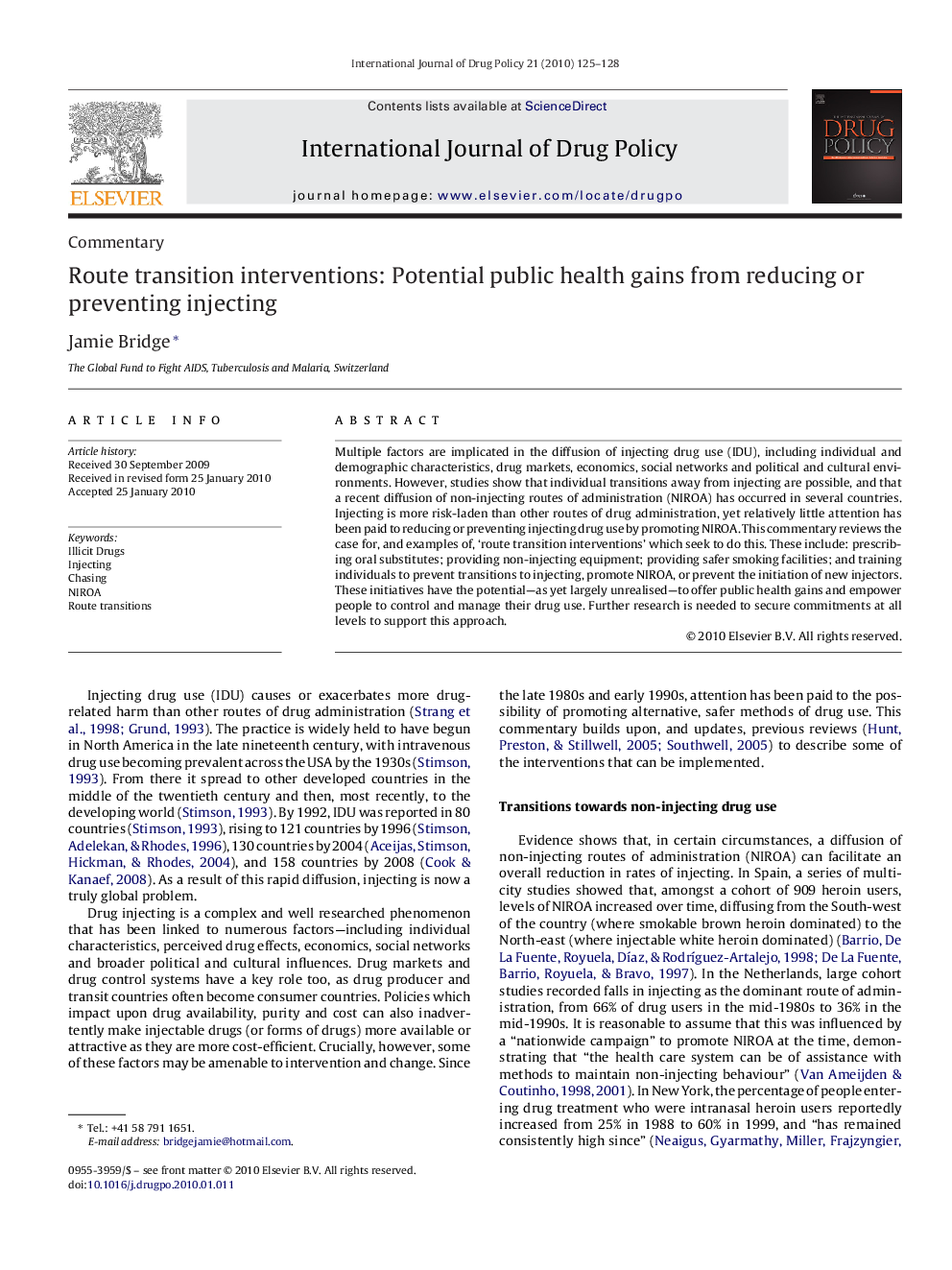| Article ID | Journal | Published Year | Pages | File Type |
|---|---|---|---|---|
| 1075451 | International Journal of Drug Policy | 2010 | 4 Pages |
Multiple factors are implicated in the diffusion of injecting drug use (IDU), including individual and demographic characteristics, drug markets, economics, social networks and political and cultural environments. However, studies show that individual transitions away from injecting are possible, and that a recent diffusion of non-injecting routes of administration (NIROA) has occurred in several countries. Injecting is more risk-laden than other routes of drug administration, yet relatively little attention has been paid to reducing or preventing injecting drug use by promoting NIROA. This commentary reviews the case for, and examples of, ‘route transition interventions’ which seek to do this. These include: prescribing oral substitutes; providing non-injecting equipment; providing safer smoking facilities; and training individuals to prevent transitions to injecting, promote NIROA, or prevent the initiation of new injectors. These initiatives have the potential—as yet largely unrealised—to offer public health gains and empower people to control and manage their drug use. Further research is needed to secure commitments at all levels to support this approach.
